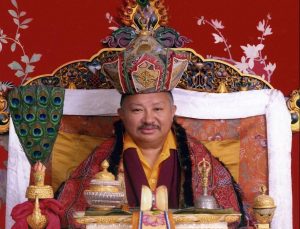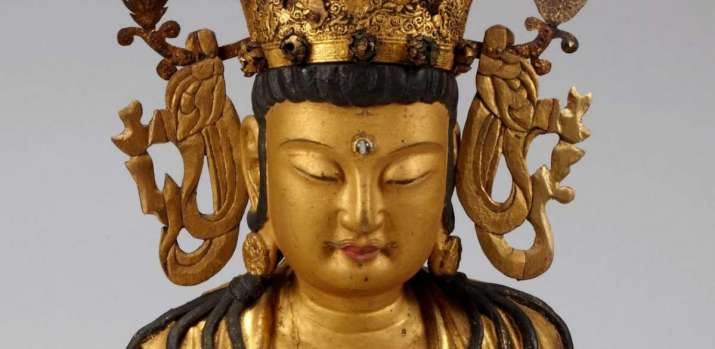
A rare 13th century Korean sculpture of Gwaneum the bodhisattva of compassion and mercy (Ch: Gwan Yin; Skt: Avalokiteshvara), on show outside of South Korea for the first time, takes center stage in a new exhibition at the Washington, DC-based Arthur M. Sackler Gallery titled “Sacred Dedication: A Korean Buddhist Masterpiece.”
Created in the late Goryeo dynasty (918–1392) and on loan from the National Museum of Korea, the Arthur M. Sackler Gallery said of the statue: “This crowned image is now known to be the oldest surviving gilded wood figure in an informal pose. Its posture, with one leg raised and the other lowered, is associated with the deity’s dwelling place, where he sits calmly on rocks above the crashing waves of the sea. The same subject in a similar pose was common in devotional paintings, such as the hanging scroll of Suwol Gwaneum bosal (Water-Moon Avalokiteshvara) now in the collection of the Freer Gallery.” (Freer|Sackler)
The Freer Gallery of Art and the Arthur M. Sackler Gallery (Freer|Sackler) together make up the Smithsonian Institution’s national museums of Asian art, and are home to the largest Asian art research library in the US. Featuring permanent and temporary exhibitions from ancient times to the present day, the museum’s collections are noted for including some of the most important ancient Chinese jades and bronzes in the world.
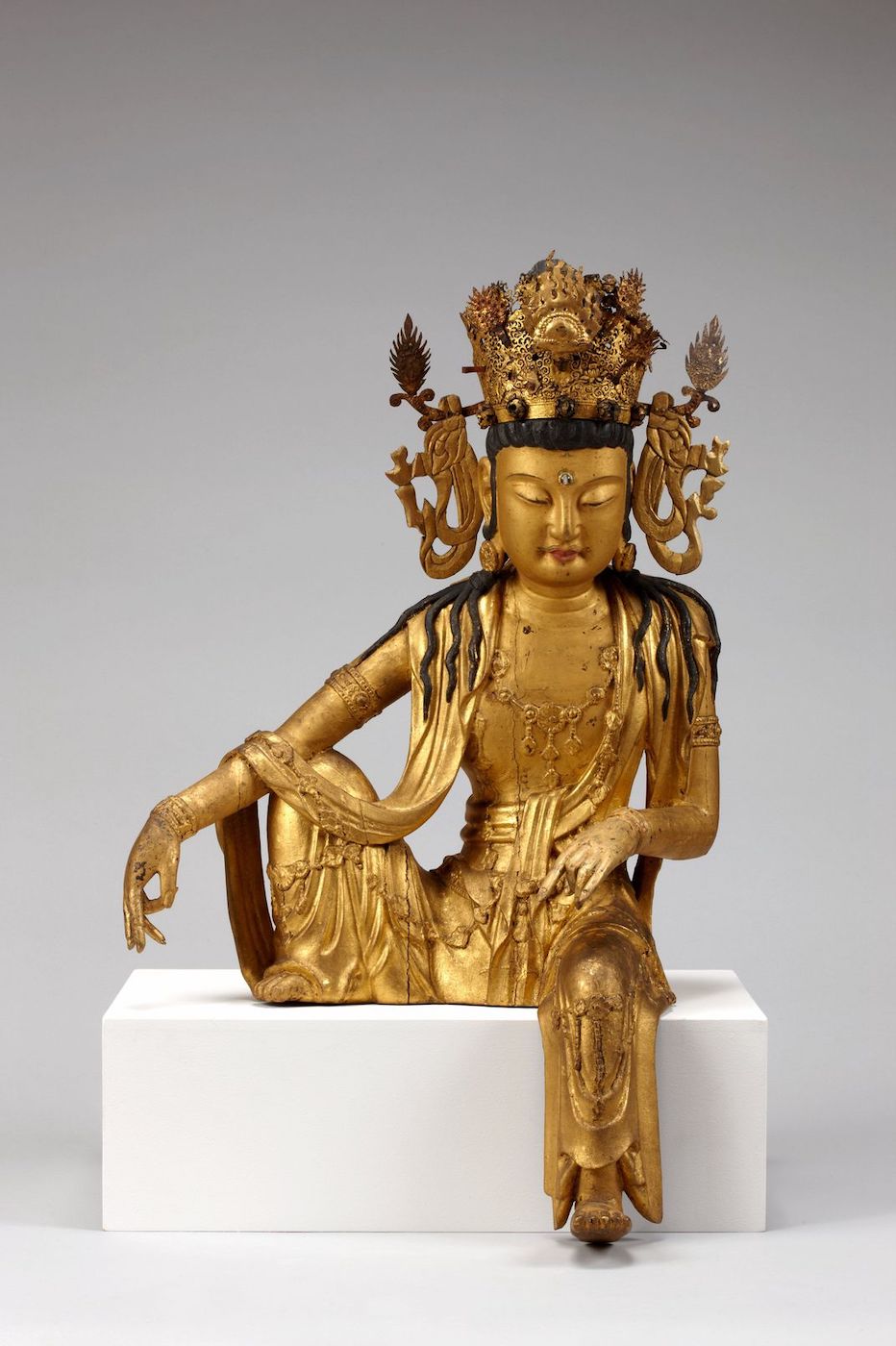
From smithsonianmag.com
Standing some 60 centimeters high and sculpted from 15 joined pieces of fir, the golden figure wears an intricately fashioned and removable metal crown. The sculpture’s right arm is extended, supported on the figure’s right knee, while the left arm is bent at the elbow and suspended in mid-air, indicating that it might originally have been placed upon a carved wooden platform.
“Sacred texts and potent symbolic objects were sealed inside this hollow religious sculpture when it was first placed into worship in the 13th century,” Freer|Sackler explained in an announcement. “The practice of adding dedication material to a Buddhist sculpture during consecration ceremonies was believed to transform it into a living body. Recent research conducted by the National Museum of Korea provides new information about this rare sculpture, its hidden contents, and the special rituals that surrounded image consecration in Korea centuries ago.” (Freer|Sackler)
The Goryeo (고려) dynasty was established in 918 by King Taejo Wang Geon. It united the Later Three Kingdoms (892–936) in 936 and ruled most of the Korean Peninsula until it was displaced by the founder of the Joseon kingdom, Yi Seong-gye, in 1392. Goryeo expanded the country’s borders to present-day Wonsan in the northeast (936–943), the Yalu River (993), eventually expanding to cover almost all of the present-day Korean Peninsula (1374).
While the achievements of Goryeo include establishing relations with the southern kingdoms of what is now China to stabilize national sovereignty, and progressive taxation policies, Goryeo is perhaps most notable for providing an environment in which the arts were able to flourish, leading to the creation of countless sophisticated works by this Buddhist state. Buddhism in Goryeo also evolved in ways that rallied support for the state to protect the kingdom from external threats.
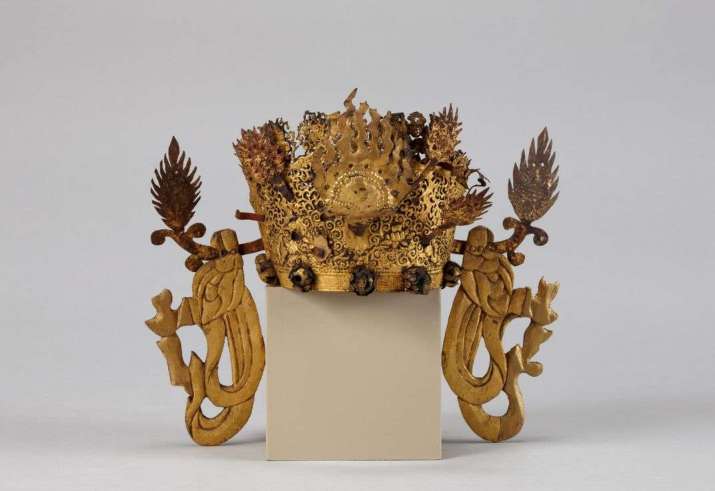
According to the museum, the rich materials employed to create the gilded sculpture—including the crystal urna (Skt.) on its forehead, symbolizing a third eye and representing the ability to perceive past our mundane universe of suffering and into the divine world—suggests that the statue was a significant piece created by accomplished woodcarvers and gilders.
“During the Goryeo period, you have very strong royal patronage for the Buddhist institution and for image-making,” explained the Keith Wilson, who co-curated “Sacred Dedication” for the gallery, along with Sunwoo Hwang, a student from Dongguk University in Seoul and a fellow at the museum. (Smithsonian.com)
Considered a complement to the museum’s “Encountering the Buddha” exhibition, which lacks any Korean sculptures. The loaned statue has been exhibited opposite a scroll from the Freer|Sackler’s collection, depicting Gwaneum in his dwelling on the rocks above the sea and being visited by a pilgrim on his way to enlightenment. The museum emphasized its pleasure at the valauable opportunity to display the two rare depictions of Gwaneum—crafted within a century of each other—and to share them with visitors.
“Sacred Dedication: A Korean Buddhist Masterpiece,” will run until 22 March 2020.
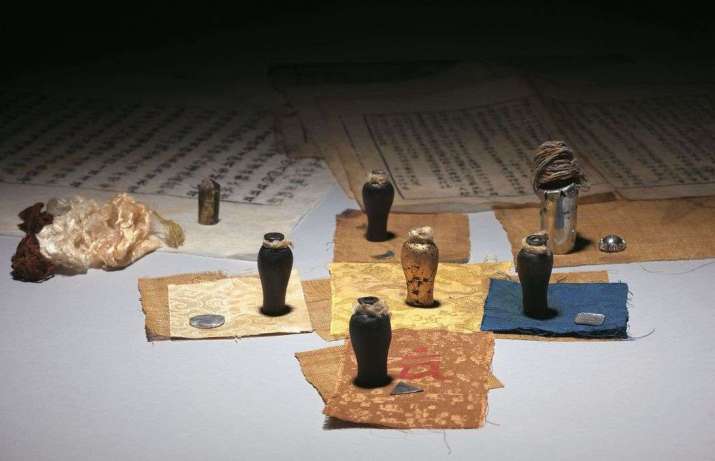
See more
Rare, Centuries-Old Korean Buddhist Masterpiece Goes on View (Smithsonian.com)
Sacred Dedication: A Korean Buddhist Masterpiece (Freer|Sackler)
Freer|Sackler
National Museum of Korea









